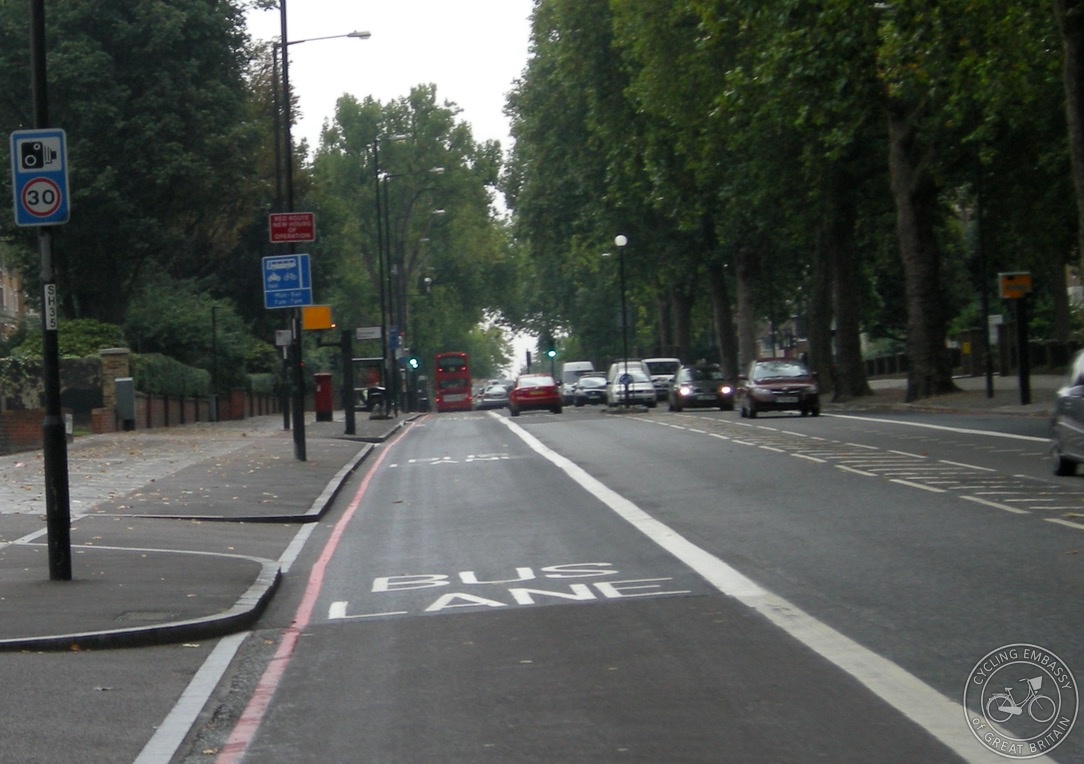Bus lane
A motor traffic lane that is specifically reserved for the use of buses, and cycles and taxis, where permitted by signs.

Although some cycling guidance, like the Department for Transport's LTN 2/08 Cycling Infrastructure Design, recommend bus lanes as a form of cycling provision* -
Bus lanes form an important part of cycle route networks. They are often placed on primary transport routes, providing cyclists with direct routes to town centres and other important destinations. Bus lanes are generally popular with cyclists.
high-quality, inclusive design for cycling must involve separation from bus lanes, for several reasons -
- bus lanes are not attractive cycling environments, particularly when they are busy, and shared with taxis (and motorbikes);
- buses and cycling are different modes of transport that travel at different speeds, and will impede each other;
- Sustainable Safety's principle of homogeneity states that road design should eliminate differences of mass and speed, meaning buses and cycles should not be mixed.
The Highways England standard Cycle Traffic and the Strategic Road Network sets out that - at minimum - cycling should either be accommodated in a separate 2m lane, or in a shared 4.5m bus lane, in a 30mph limit. With limits of 40mph and above, cycling must be physically separated from bus lanes.
*It should be noted that LTN 2/08 selectively quotes the TRL Report TRL601, 'Cycling in Bus Lanes' in making this claim. The full text in TRL601 reads 'cycling in bus lanes was very popular with cyclists, compared with cycling in the typical traffic conditions of the area.'
